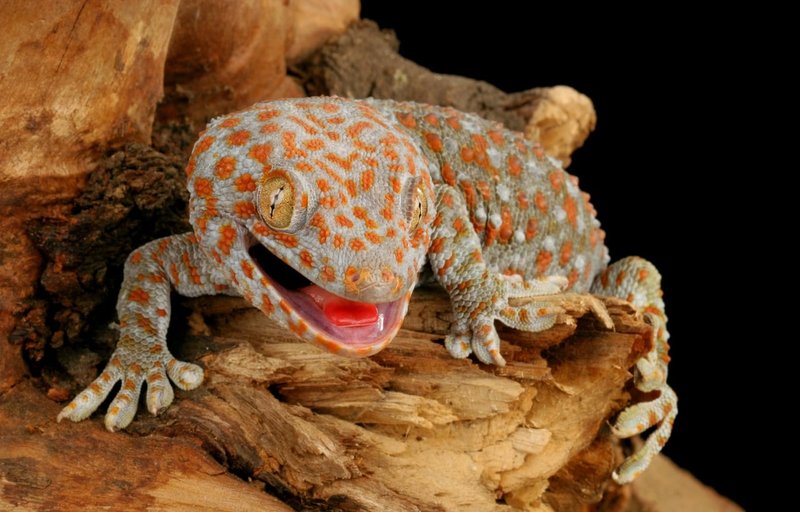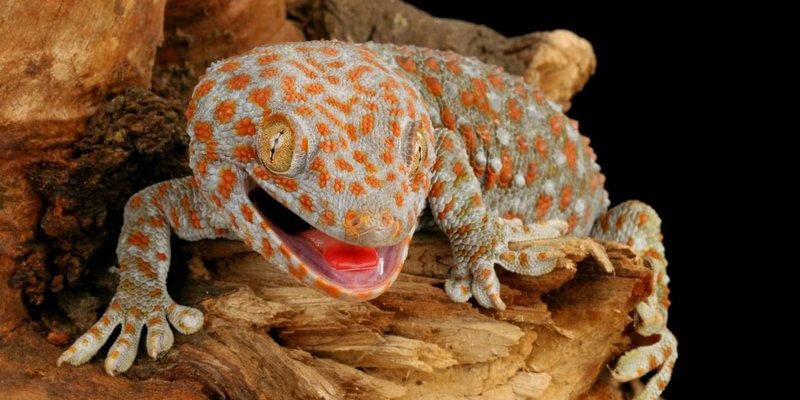
Think of the Tokay gecko as the “rockstar” of the lizard world. It has a bold personality, which can be a bit intimidating at times. While most geckos are gentle and shy, the Tokay has a reputation for being more aggressive. So, if you’re wondering whether getting too close to one might lead to trouble, let’s explore that in detail.
What is a Tokay Gecko?
The Tokay gecko (Gekko gecko) is native to Southeast Asia but has been introduced in other regions, including Florida and Hawaii. Known for its vibrant blue and orange coloration, this gecko can grow quite large, often reaching lengths up to a foot. They’re mainly nocturnal, meaning you’ll typically hear them at night when they make their distinctive calls.
These geckos are also known for their impressive stickiness, allowing them to climb smooth surfaces with ease. They use their strong toes to grip onto tree bark and buildings. This unique adaptation helps them find food, which mainly consists of insects and small vertebrates. Besides their physical features, their vocalizations are loud and can be heard from quite a distance, which is part of their courtship and territorial behavior.
Are Tokay Geckos Aggressive?
You might be asking, “How aggressive can they really be?” Well, here’s the thing: Tokay geckos aren’t your average lizards. They can show signs of aggression, especially when they feel threatened. If you accidentally corner one or invade its space, it’s likely to react defensively.
Their powerful bite can cause pain, and yes, they do bite if they feel provoked. The Tokay gecko’s strong jaws are designed to crush insects, but they can definitely apply pressure to a human finger too! Although their bites are usually not life-threatening, they can lead to an infection if not treated properly. So, it’s always better to admire them from a distance rather than trying to pick one up.
What About Their Venom?
Now, let’s clear up a common misconception: Tokay geckos are not venomous. They don’t have fangs or venom glands like some snake species. Their threat primarily comes from their bite. In some cases, their saliva can cause mild irritation, but it’s not dangerous.
So, the fear of a venomous Tokay gecko is unfounded. However, it’s wise to exercise caution around any wild animal. Respecting their space will keep both you and the gecko safe.
Handling Tokay Geckos
If you ever find yourself in a position where you need to handle a Tokay gecko (say, for relocation), it’s crucial to do so carefully. Here are some steps to keep in mind:
- Wear gloves: This protects your hands from bites.
- Use a towel: Gently wrap the gecko in a towel to restrain its movement.
- Stay calm: Quick movements can startle the gecko and provoke a bite.
- Return it safely: If you’re moving it, ensure you release it in a suitable environment away from human dwellings.
By following these steps, you’ll minimize the risk of injury to yourself and the gecko.
Are There Health Risks from Tokay Gecko Bites?
Let’s talk about what happens if you do get bitten. While the bite itself is usually more annoying than dangerous, it can introduce bacteria into your skin. Here’s how to handle it if you find yourself in that situation:
1. Clean the wound: Use soap and water immediately to cleanse the area.
2. Disinfect: Apply an antiseptic to help prevent infection.
3. Watch for symptoms: Keep an eye out for redness, swelling, or pus. If any of these symptoms occur, it’s best to see a doctor.
Most bites will heal without complications, but it’s always better to be cautious. If you have a weakened immune system or any concerns, consult a healthcare provider.
What Should You Do if You Encounter One?
So, you’re out in nature, and you spot a Tokay gecko. What should you do? Here’s a simple guide to ensure a safe encounter:
- Observe from a distance: Enjoy watching their behavior without getting too close.
- Don’t provoke: Avoid throwing objects or making loud noises that could agitate it.
- Leave it alone: If it’s in your home or yard, try to give it an exit route instead of capturing it.
Nature is best enjoyed when you let creatures be just that—creatures! They have their own roles in the ecosystem, and disturbing them can lead to unnecessary stress for both you and the gecko.
In summary, while the Tokay gecko has an intimidating reputation, it is not inherently dangerous to humans. Yes, they can bite and have a fierce temperament, but understanding how to coexist with these fascinating creatures is key. Remember to observe them from a distance, respect their space, and handle them cautiously if necessary.
With this newfound knowledge, you can appreciate the beauty of the Tokay gecko while also ensuring your safety. So, next time you hear a loud call in the night, you’ll know it’s just a Tokay being itself—loud, proud, and a bit misunderstood.

